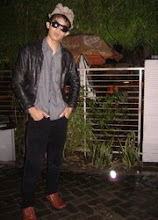Hiragana
Japanese includes three scripts. The very first script, which is to be learnt in the Japanese Language, is called Hiragana. It is the very basic script. Hiragana was made by modifying the Kanji letters. In the ancient times when Hiragana was made, many Japanese people did not accept it. The men used only Chinese characters in their writings. As the women were not allowed to receive the same level of education as that of men, the women started using hiragana first. Earlier for writing unofficial documents, only Hiragana was used. Whereas, for official documents both katakana and kanji were used. Hiragana is used for words, which do not have Kanji. It is also used as suffixes, prefixes and particles. As we cannot change kanji into different tenses, it is written in Hiragana at such times.
There are 46 basic Hiragana characters. It includes
* 1) 5 main vowels, which are ‘a’ pronounced as ‘aa’ as in ‘mark’ ‘i’ pronounced as ‘i’ as in ‘eat’ ‘u’ pronounced as ‘oo’ as in ‘soon’ ‘e’ pronounced as ‘e’ as in ‘tell’ ‘o’ pronounced as ‘o’ as in ‘more’
* 2) 39 consonants which are made by joining a vowel at the end of a character like "ka", "ki", "ku", "ke", "ko"
* 3) One single consonant "n"
* 4) An alphabet "wo" pronounced "o".
When "tenten or Maru" is added to, some of the main characters, new characters are formed. Tenten are two small lines written at the head of a consonant. Maru is a small circle written at the head of a consonant. For example, if tenten is added to "ka" becomes "ga" or "sa" become "za". In addition, if maru is added to "ha" it becomes "ba".
When either "ya", "yu" or "yo" character is written at the foot of any "I" ending character then they form the consonant clusters.
While writing hiragana, katakana or kanji, one needs to follow a particular stroke order. Stroke order is called as "Kakijun" in Japanese. It actually means the sequential steps to write a particular character. Also, while forming Japanese words by using hiragana script, there are a few rules one needs to follow. They are:-
* 1) Nasal sound: Words, which have a nasal sound it consists of the consonant ‘n’ as in "enpitsu", which means pencil.
* 2) Double consonants: When a small "tsu" is written in a word then the consonant after that is repeated twice as in "gakkou" which means school.
* 3) Long pronunciation: Whenever vowel "u" comes after any "o" ending character then the sound "o" is prolonged. Similarly, whenever "a", "i", "u", "e", "o" comes after any "a", "i", "u", "e", "o" ending character then also the respective sound is prolonged.
Following are the Hiragana charts to help you learn hiragana:-
Hiragana chart-1
hiragana
Hiragana chart-2
hiragana
Hiragana chart-3
hiragana
There are a few important things, which one should be very clear about and should always remember it. They are :-
* The "wo/ o" consonant is used only as a particle. It is not used in forming words.
* The consonants "ji" and "zu" come in two different series. The "ji" which occurs in the "Da" series is not at all used whereas the "Zu" is used very rarely. The "Ji" and "Zu" which occur in the "Za" series is always used in forming words.
Langganan:
Posting Komentar (Atom)

Tidak ada komentar:
Posting Komentar